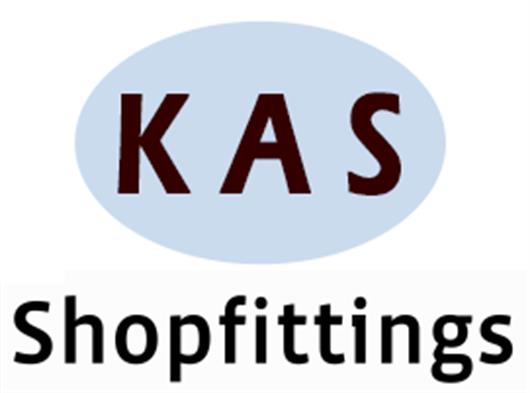 Add My Company
Add My Company
Sign In
British Currency: A Brief History
02-08-2023

The pound is particularly weak at present compared with other European economies, with uncertainty over Brexit blamed for the dip. It recently fell to ?1.0736 against the euro - a drop of 0.75% and its lowest level in a decade, according to the Office for National Statistics.
The drop in the value of the pound has occurred ahead of Britain's departure from the EU on 31st October, amid heightened fears that we may suffer a no-deal Brexit, leading to trade chaos. The gloomy outlook saw the UK economy shrinking for the first time since 2012, with a decline of 0.2%.
Historic institution
British currency is a historic institution that has been around since the times of Anglo-Saxon England. The pound was known to be a unit of currency in 775 AD, when ?1 was the equivalent of 1 lb in weight of silver. Back in the 8th century, this was a lot of money.
The origins of the name "pound" go back even further, to the times of Ancient Rome in around 750 BC. Its name came from the Latin word "poundus" or "weight". The "?" symbol is based on the ornate "L" at the start of the Latin word "Libra". A Libra Pondo meant "a pound by weight" in Ancient Rome.
During its long history, since Sterling was adopted as a unit of currency in England during the reign of King Athekstan in 928, the pound has had its ups and downs. The king opened mints across the country to supply the growing demand. In those days, ?1 could purchase a herd of 15 cows!
Bank of England
In 1690, England's Navy was defeated by the French at the Battle of Beachy Head. It was the French's greatest tactical victory during the Nine Years' War. King William III needed funding to pay for the continuing war with France, so he established the Bank of England in 1694 for this purpose, rebuilding England's depleted Navy.
Until 1717, the UK defined Sterling's value in silver, but this was the year it was valued in gold instead, for the first time. The Master of the Mint, Sir Isaac Newton, set the price of gold at ?4.25 per fine ounce. The price remained the same for the next 200 years.
During the 1800s, the idea that each nation must back the money in circulation with the equivalent gold in reserve spread across Europe. An official gold standard was introduced after Germany adopted it. For the first time, mass international trade began to boom.
Wartime inflation
The first time the UK saw the value of the pound take a serious dip was during the Great War from 1914 to 1918. The nation had to suspend the gold standard to support the war effort and borrowed heavily. With high inflation, Britain was forced to devalue the pound significantly, particularly towards the end of the war.
In 1925, Chancellor of the Exchequer Winston Churchill was able to return Sterling to the gold standard at the pre-war rate of ?4.86 to the dollar. By 1931, the pound was taken off the gold standard and its value immediately plummeted - ?1 was the equivalent of $3.69 as a result.
In 1933, the US devalued the dollar and the pound reached its highest-ever value of ?5 in 1934. The outbreak of World War II in 1939 saw the value of the pound take a nosedive again and by 1940, ?1 was the equivalent of $4.03.
High unemployment
In 1967, the British economy slumped and caused another crisis, with the pound valued at only $2.40 - a devaluing of more than 14%. At the time, Prime Minister Harold Wilson tried to reassure the British public that this didn't mean the pound in people's "pocket or purse" had been devalued.
Things got worse a decade later and in 1976, Britain was crippled by high unemployment and inflation. The value of the ?1 was the equivalent of $1.70 and Britain was forced to request an International Monetary Fund loan.
In 1985, international intervention in the currency market, aimed at depreciating the dollar, caused the value of the pound to nosedive, and ?1 was the equivalent of less than $1.20.
Dot-com boom
The UK exited the Exchange Rate Mechanism in 1992 due to a decline in the value of the pound by more than 20%. The pound began to recover during the 1990s, thanks to a boom caused by the World Wide Web, but in 2001, the "dot-com" bubble burst and the pound declined in value again, with ?1 valued at $1.40.
Doom and gloom continued in 2008, when the demise of global financial services firm Lehman Brothers triggered a financial crisis across the world.
No sooner had the pound started to recover again, than the UK voted to leave the European Union in 2016, leading to the pound suffering one of its worst days in history, when its value dropped to a 30-year low.
Effects of Brexit
Now, with the prospect of a no-deal Brexit looming on 31st October, some economists are predicting a recession, which occurs when the economy declines in two consecutive quarters.
With Sterling having had a volatile three years since the monumental vote to leave the EU, further volatility is predicted once the UK finally leaves in two months' time. Economists predict that the worst-case scenario for Sterling will be the uncertainty of a no-deal Brexit.
When the economic future is uncertain, you?re going to need to stand out from the crowd. Give your business a boost by making your shop as welcoming and appealing as possible for customers. KAS supplies shop fittings, shelving systems, slatwall, shop counters, card racks and other shop display equipment at affordable prices.
For more information on British Currency: A Brief History talk to KAS Shopfittings
Enquire Now
List your company on FindTheNeedle.

